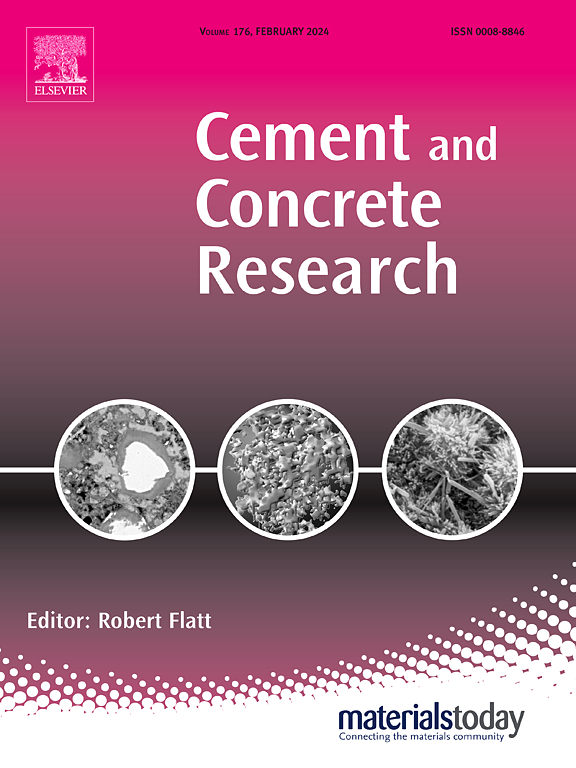Unraveling the role of magnesium salts in liquid alkali-free accelerators: Insights into setting and early-age properties of accelerated cement pastes
IF 10.9
1区 工程技术
Q1 CONSTRUCTION & BUILDING TECHNOLOGY
引用次数: 0
Abstract
Magnesium salts are key components of liquid alkali-free accelerator; however, their influence on the setting and hardening of accelerated cement pastes remains unclear. This study systematically investigates the role of different magnesium salts by preparing and examining aluminum sulfate (AS)-based accelerators at different dosages. The effects of the accelerators on the setting and early age mechanical properties of the cement pastes were comparatively studied. Results revealed that the type and dosage of magnesium salts significantly affected these properties. Specifically, MgSiF6 substantially accelerated the cement paste setting, albeit at the expense of early age mechanical strength, owing to its considerable delay in C3S hydration. Conversely, both Mg(NO3)2 and MgSO4 slightly shortened the setting time while improving the 6 h compressive strength, which was attributed to the facilitation of C3S hydration and refinement of the cement pore structure. Further analysis of ettringite formation, growth and chemical composition indicated that the low pH environment induced by MgSiF6 promoted the incorporation of magnesium and fluoride ions into ettringite, leading to the formation of higher-aspect-ratio crystals. This morphological change enhanced the percolation network, thus accelerating cement setting. These findings advance our understanding of the setting and hardening mechanisms of accelerated cement pastes and offer valuable guidelines for optimizing accelerator formulations.
揭示镁盐在液体无碱促进剂中的作用:对加速水泥浆的凝结和早期特性的见解
镁盐是液体无碱促进剂的关键成分;然而,它们对加速水泥浆的凝结和硬化的影响尚不清楚。本研究通过制备和检测不同剂量的硫酸铝基加速剂,系统地考察了不同镁盐的作用。比较研究了促进剂对水泥浆体凝结和早期力学性能的影响。结果表明,镁盐的种类和用量对这些性能有显著影响。具体来说,MgSiF6显著地加速了水泥浆体的凝结,尽管是以牺牲早期机械强度为代价的,因为它显著地延迟了C3S的水化。相反,Mg(NO3)2和MgSO4均略微缩短了水泥的凝结时间,同时提高了水泥的6h抗压强度,这是由于促进了C3S的水化和细化了水泥的孔隙结构。进一步分析钙矾石的形成、生长和化学成分表明,MgSiF6诱导的低pH环境促进镁离子和氟离子进入钙矾石,导致高纵横比晶体的形成。这种形态变化增强了渗透网络,从而加速了水泥的凝结。这些发现促进了我们对加速水泥浆的凝结和硬化机制的理解,并为优化加速剂配方提供了有价值的指导。
本文章由计算机程序翻译,如有差异,请以英文原文为准。
求助全文
约1分钟内获得全文
求助全文
来源期刊

Cement and Concrete Research
工程技术-材料科学:综合
CiteScore
20.90
自引率
12.30%
发文量
318
审稿时长
53 days
期刊介绍:
Cement and Concrete Research is dedicated to publishing top-notch research on the materials science and engineering of cement, cement composites, mortars, concrete, and related materials incorporating cement or other mineral binders. The journal prioritizes reporting significant findings in research on the properties and performance of cementitious materials. It also covers novel experimental techniques, the latest analytical and modeling methods, examination and diagnosis of actual cement and concrete structures, and the exploration of potential improvements in materials.
 求助内容:
求助内容: 应助结果提醒方式:
应助结果提醒方式:


